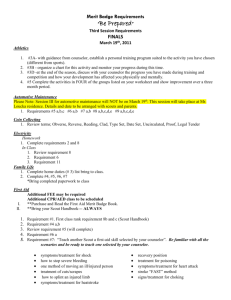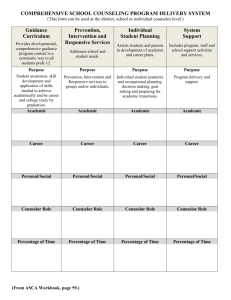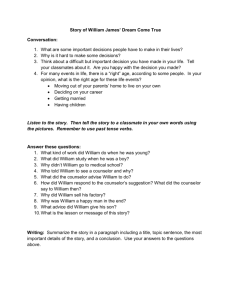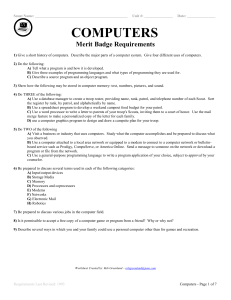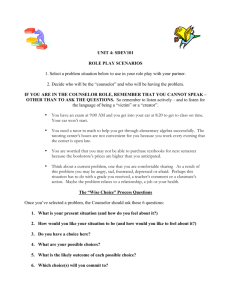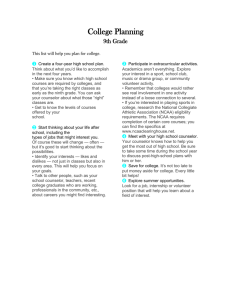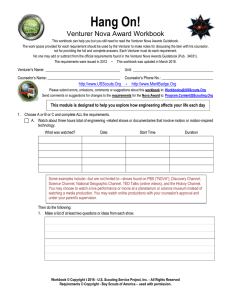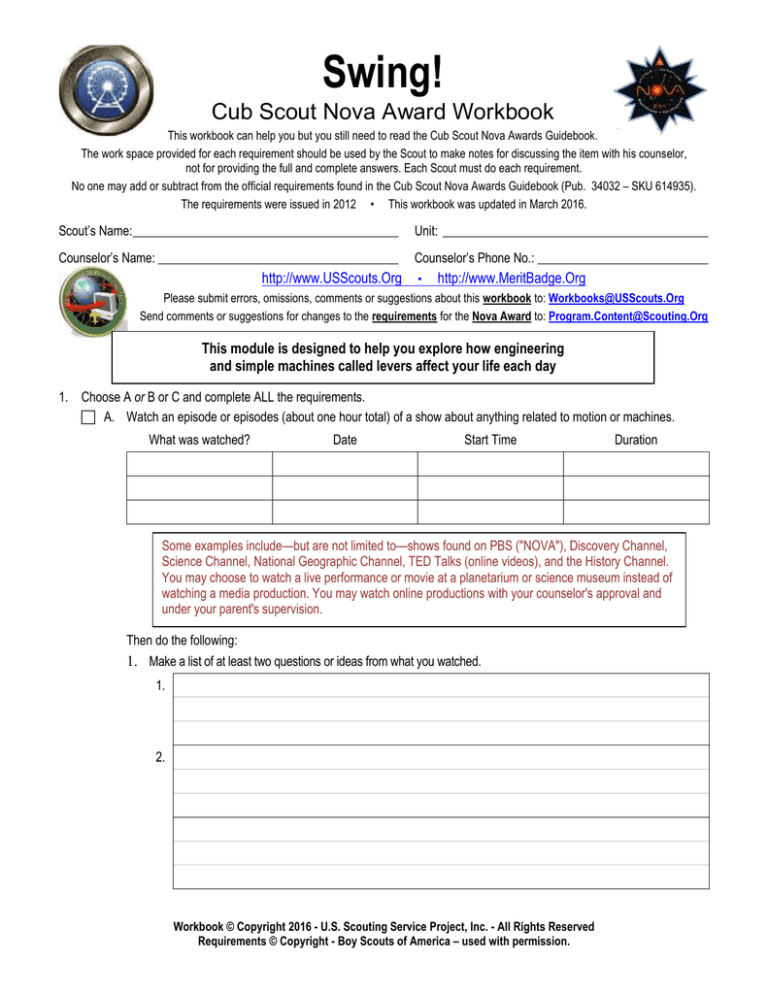
Swing!
Cub Scout Nova Award Workbook
This workbook can help you but you still need to read the Cub Scout Nova Awards Guidebook.
The work space provided for each requirement should be used by the Scout to make notes for discussing the item with his counselor,
not for providing the full and complete answers. Each Scout must do each requirement.
No one may add or subtract from the official requirements found in the Cub Scout Nova Awards Guidebook (Pub. 34032 – SKU 614935).
The requirements were issued in 2012 • This workbook was updated in March 2016.
Scout’s Name:__________________________________________
Unit: __________________________________________
Counselor’s Name: ______________________________________
Counselor’s Phone No.: ___________________________
http://www.USScouts.Org
•
http://www.MeritBadge.Org
Please submit errors, omissions, comments or suggestions about this workbook to: Workbooks@USScouts.Org
Send comments or suggestions for changes to the requirements for the Nova Award to: Program.Content@Scouting.Org
This module is designed to help you explore how engineering
and simple machines called levers affect your life each day
1. Choose A or B or C and complete ALL the requirements.
A. Watch an episode or episodes (about one hour total) of a show about anything related to motion or machines.
What was watched?
Date
Start Time
Duration
Some examples include—but are not limited to—shows found on PBS ("NOVA"), Discovery Channel,
Science Channel, National Geographic Channel, TED Talks (online videos), and the History Channel.
You may choose to watch a live performance or movie at a planetarium or science museum instead of
watching a media production. You may watch online productions with your counselor's approval and
under your parent's supervision.
Then do the following:
1. Make a list of at least two questions or ideas from what you watched.
1.
2.
Workbook © Copyright 2016 - U.S. Scouting Service Project, Inc. - All Rights Reserved
Requirements © Copyright - Boy Scouts of America – used with permission.
Swing!
Scout's Name: ________________________
2. Discuss two of the questions or ideas with your counselor.
1.
2.
B. Read (about one hour total) about anything related to motion or machines.
What was read?
Date
Start Time
Duration
Books on many topics may be found at your local library. Examples of magazines include but are not
limited to Odyssey, KIDS DISCOVER, National Geographic Kids, Highlights, and OWL or owlkids.com.
Then do the following:
1. Make a list of at least two questions or ideas from what you read.
1.
2.
2. Discuss two of the questions or ideas with your counselor.
1.
Swing! – Nova Award Workbook
Page 2 of 8
Swing!
Scout's Name: ________________________
2.
C
Do a combination of reading and watching (about one hour total) about anything related to motion or machines.
What was watched or read?
Date
Start Time
Duration
Then do the following:
1. Make a list of at least two questions or ideas from what you read and watched.
1.
2.
2. Discuss two of the questions or ideas with your counselor.
1.
2.
2. Complete ONE belt loop or pin from the following list. (Choose one that you have not already earned.)
Badminton
Mathematics
Baseball
Softball
BB-gun Shooting
Table Tennis
Fishing
Tennis
Golf
Ultimate
Hockey
Swing! – Nova Award Workbook
Page 3 of 8
Swing!
Scout's Name: ________________________
3. Levers
A. Make a list or drawing of the three types of levers. (A lever is one kind of simple machine.)
1.
2.
3.
B. Be able to tell your counselor
1. The class of each lever
2. How each lever works
Class
How it works
1.
2.
3.
Swing! – Nova Award Workbook
Page 4 of 8
Swing!
Scout's Name: ________________________
C. With your counselor, discuss:
1. The type of lever that is involved with the motion for the belt loop or pin you chose for requirement 2
2. What you learned about levers and motion from earning your belt loop or pin
3. Why we use levers
4. Do the following:
A. Visit a place that uses levers, such as a playground, carpentry shop, construction site, restaurant kitchen, or any other
location that uses levers.
Visitations to places like carpentry shops, construction sites, restaurant kitchens, etc. will require
advance planning by the counselor. The counselor should call ahead to make arrangements and
make plans to have appropriate supervision of all Scouts.
The site will very likely have rules and instructions that must be followed. The counselor
should help ensure that all the participants are aware of and follow those rules. This may
include safety procedures and other instructions.
Place visited:____________________________________________________________________________________
Swing! – Nova Award Workbook
Page 5 of 8
Swing!
Scout's Name: ________________________
B. Discuss with your counselor the equipment or tools that use levers in the place you visited.
5. Do EACH of the following:
A. On your own, design, including a drawing, sketch, or model, ONE of the following:
1. A playground fixture that uses a lever
2. A game or sport that uses a lever
3. An invention that uses a lever
Swing! – Nova Award Workbook
Page 6 of 8
Swing!
Scout's Name: ________________________
B. Discuss with your counselor how the lever in your design will move something.
6. Discuss with your counselor how levers affect your everyday life.
Swing! – Nova Award Workbook
Page 7 of 8
Attachment – (NOTE: It is not necessary to print this page.)
Important excerpts from the ‘Guide To Advancement’, No. 33088:
Effective January 1, 2012, the ‘Guide to Advancement’ (which replaced the publication ‘Advancement Committee Policies and
Procedures’) is now the official Boy Scouts of America source on advancement policies and procedures.
[ Inside front cover, and 5.0.1.4 ] — Unauthorized Changes to Advancement Program
No council, committee, district, unit, or individual has the authority to add to, or subtract from, advancement
requirements. (There are limited exceptions relating only to youth members with disabilities. For details see section 10,
“Advancement for Members With Special Needs”.)
[ Inside front cover, and 7.0.1.1 ] — The ‘Guide to Safe Scouting’ Applies
Policies and procedures outlined in the ‘Guide to Safe Scouting’, No. 34416, apply to all BSA activities, including those
related to advancement and Eagle Scout service projects. [Note: Always reference the online version, which is updated
quarterly.]
[ 7.0.3.1 ] — The Buddy System and Certifying Completion
Youth members must not meet one-on-one with adults. Sessions with counselors must take place where others can view
the interaction, or the Scout must have a buddy: a friend, parent, guardian, brother, sister, or other relative —or better
yet, another Scout working on the same badge— along with him attending the session. When the Scout meets with the
counselor, he should bring any required projects. If these cannot be transported, he should present evidence, such as
photographs or adult certification. His unit leader, for example, might state that a satisfactory bridge or tower has been
built for the Pioneering merit badge, or that meals were prepared for Cooking. If there are questions that requirements
were met, a counselor may confirm with adults involved. Once satisfied, the counselor signs the blue card using the date
upon which the Scout completed the requirements, or in the case of partials, initials the individual requirements passed.
[ 7.0.3.2 ] — Group Instruction
It is acceptable—and sometimes desirable—for merit badges to be taught in group settings. This often occurs at camp
and merit badge midways or similar events. Interactive group discussions can support learning. The method can also be
attractive to “guest experts” assisting registered and approved counselors. Slide shows, skits, demonstrations, panels,
and various other techniques can also be employed, but as any teacher can attest, not everyone will learn all the
material.
There must be attention to each individual’s projects and his fulfillment of all requirements. We must know that every
Scout —actually and personally— completed them. If, for example, a requirement uses words like “show,” “demonstrate,”
or “discuss,” then every Scout must do that. It is unacceptable to award badges on the basis of sitting in classrooms
watching demonstrations, or remaining silent during discussions. Because of the importance of individual attention in the
merit badge plan, group instruction should be limited to those scenarios where the benefits are compelling.
Page 8 of 8

